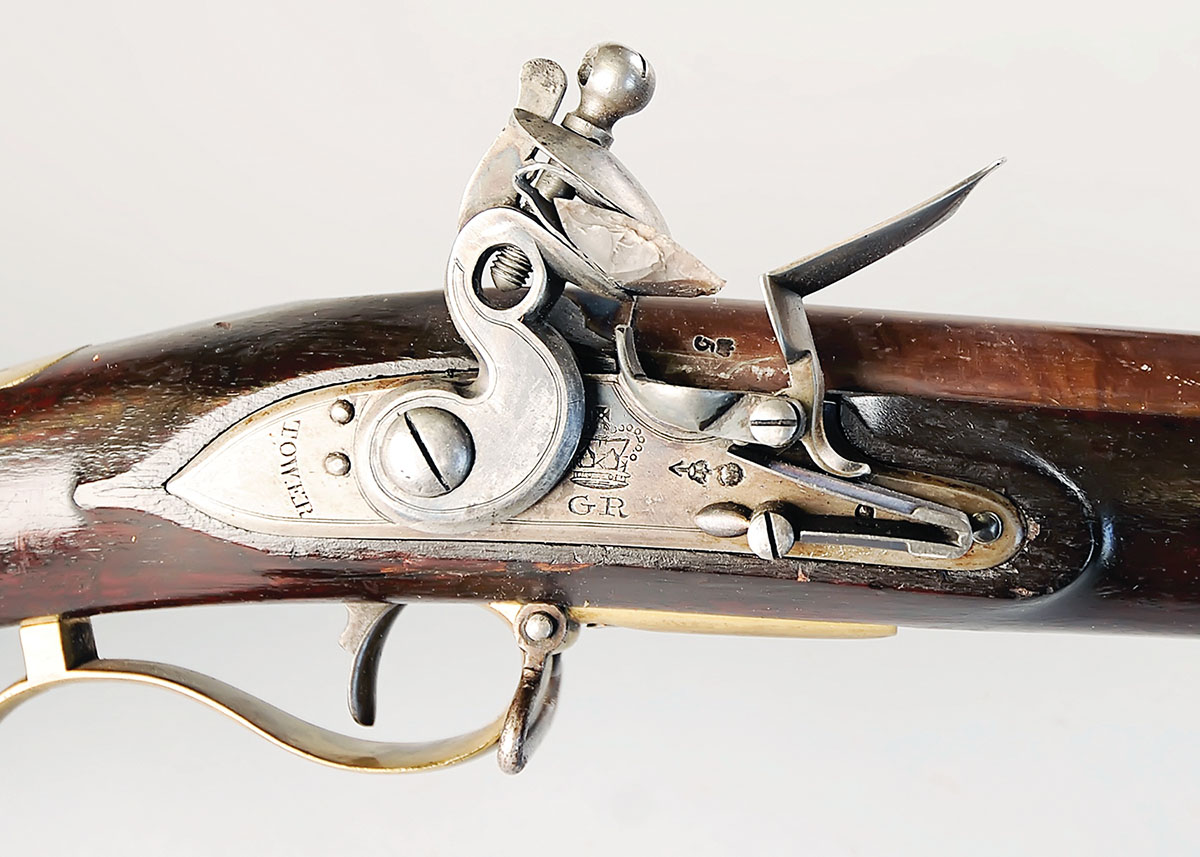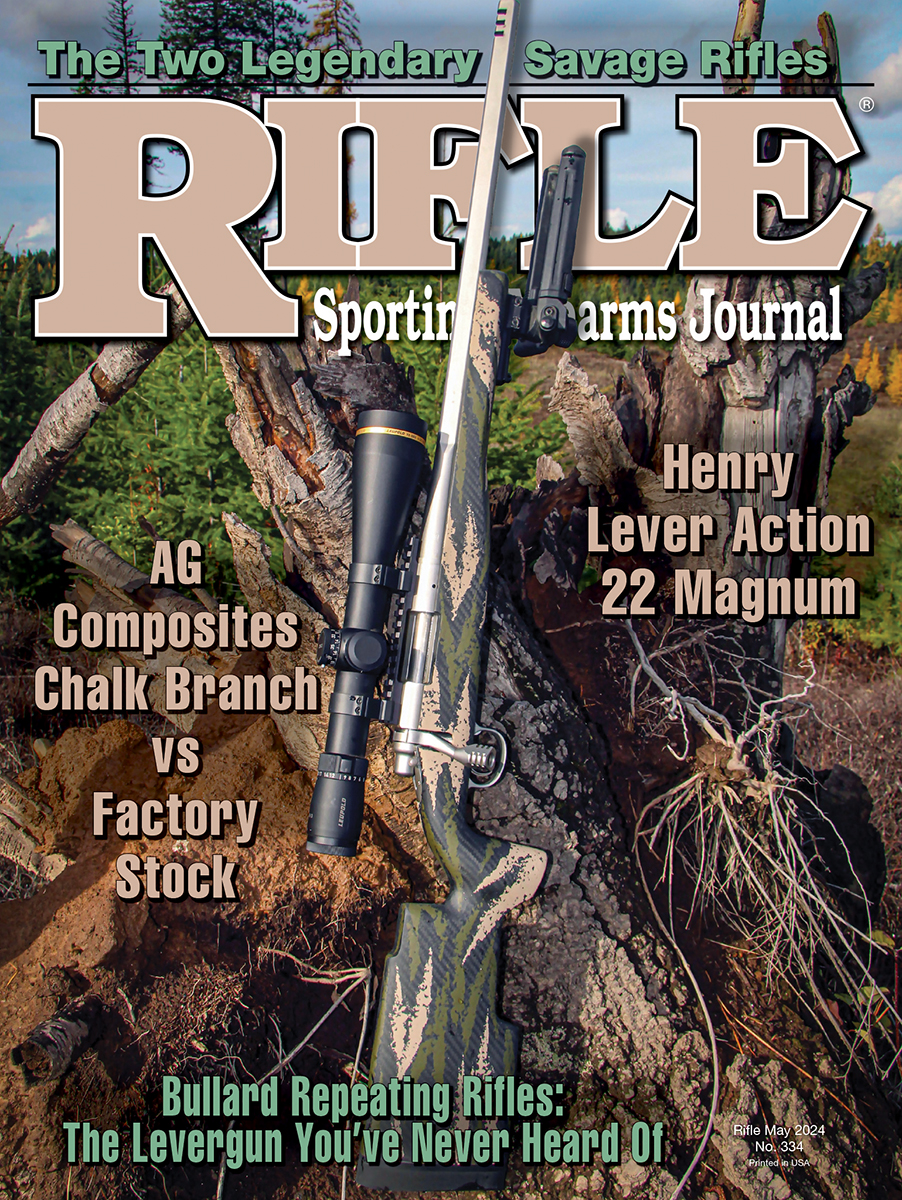Walnut Hill
Sharpe's Impact
column By: Terry Wieland | May, 24

For one thing, it raised interest in the Baker rifle to the point where they commanded big sums on the collector market. The Baker rifle is so integral to the Sharpe series that it becomes a character in itself. Where before, an original Baker might have commanded a couple of thousand dollars, they began bringing $12,000 to $15,000.
This wide public interest was due more to the later television series starring Sean Bean as Richard Sharpe, but the novels were the genesis and have continued long after. Cornwell wrote his most recent Sharpe novel in 2022 – 41 years after the first.
For those not familiar with it, the series follows the career of Richard Sharpe, who leaves a life of juvenile crime to join the British Army, serves in India, displays a remarkable talent for soldiering, is raised from the ranks to become an officer, then serves throughout the Peninsular Wars all the way to Waterloo. He became a rifleman in the 95th Rifles (formed in 1803) and wore rifle green from then on.
In those early days, riflemen served as skirmishers. While more accurate than muskets by far, rifles were slower to load – roughly one shot for three from a Brown Bess – so rifle units did not serve in the line, where volume of fire was critical. They were scouts and snipers – first into battle and last out, as they proudly proclaimed.
British rifle units trace their origins to the French and Indian War, with George Washington even getting some credit for their formation during his time as a young officer. There were a few rifle units in the British Army during the American Revolution. Rifle units developed their own tactics and became recognized as elite troops – “chosen men” – and really gained prominence in the Peninsular War from 1809 to 1814. When word of their exploits got back to England, it caused a public reaction similar to what happened with the fictional Sharpe series: Knowing how to use a rifle became suddenly very fashionable.
Amid fear of a French invasion, a volunteer movement sprang up, with citizens becoming part-time soldiers. Because the rifles were viewed as elite units, it was a mark of pride to carry a rifle, participate in shooting matches and even to wear clothes of rifle green.
The father of if all, technologically, was Ezekiel Baker, a London gunsmith who apprenticed with Henry Nock and even wrote a book, which became the army handbook on rifle use.
The volunteer movement petered out after Waterloo, but interest in rifles remained strong. In the 1850s, when relations with France once again raised fears of invasion, there was a renaissance of the volunteer movement, which gave renewed impetus to rifle development. This was the decade when James Purdey introduced his “express” rifle and, in Edinburgh, Alexander Henry not only founded a volunteer unit and became an officer, but he was also hard at work on the rifling pattern that bears his name.
In Scotland, with stag stalking, there was broad interest in rifles for both hunting and target shooting and sales were brisk. The Brits might not have become “a nation of riflemen,” but there were sure a lot of them.
In Britain, there was a third great wave in the volunteer movement, this time from 1901 to 1910. It was sparked by the Boer War, and while there was never a possibility of invasion, the publicity given to the Afrikaners’ rifles and marksmanship led to the formation of rifle clubs and shooting matches, and there followed the great age of rifle shooting in Britain with its small but highly-trained professional army at its center.
Sure, the Boer War was imperialist, and sure, much of the patriotism was of the worst jingoistic kind, but this paid off, big time, in 1914. Not only were Britain’s regular troops superb riflemen, many of the flood of recruits who flocked to join up were already good shots.
After the war ended in 1918, the wave of pacifism that swept Britain was accompanied by ever-tightening restrictions on gun ownership, so that when war came again in 1939, a disarmed Britain had to resort to begging Americans and Canadians to donate their civilian firearms as the British populace prepared for a German invasion.
A new book, Victory to Defeat: The British Army 1918-1940, examines the causes within the army itself – and they were not inconsequential – but political hostility to the military and scraping-the-barrel budgets played a huge role. Democracies make a big thing about the military being run by civilians, yet when disaster strikes, the civilians line up to blame the military.
John Nigel George, in his book British Guns and Rifles (1947) waxed enthusiastic for the impact of the rifle brigade on popular sentiment. Within a year of the on-again, off-again war with France resuming in 1804, 300,000 men had been recruited in England for home defense, and as reports later came in from Spain of the exploits of the 95th Rifles, “To be a rifleman became, almost in an instant, the height of the fashion,” George wrote, “The green jacket having an almost irresistible appeal to the young bloods of the period since it carried with it the suggestion of being a picked man; one who was privileged to lead a jolly “devil-may-care” existence, operating more or less on his own and picking off individual Frenchmen (if they ever arrived) when and as he pleased.
“Thousands of young men of better social standing than the average militia recruit – “gentlemen riflemen” – flocked to join the independent rifle corps which began to spring up in every part of the country, and participated enthusiastically in the constant target practice, skirmishing drill, and shooting matches between rival companies…”
George reported that more than 30,000 Baker rifles and barreled actions were delivered to the ordnance during this period, with no more than a sixth of that required for rifle units of the regular army, the rest going to the volunteers, and this does not take into account the thousands that were ordered from custom makers like the Mantons, Nocks, Mortimers, James Purdey and Westley Richards.
If anything, the real-life impact of the Rifles in 1810 dwarfs that of the fictional Sharpe series almost two centuries later.


